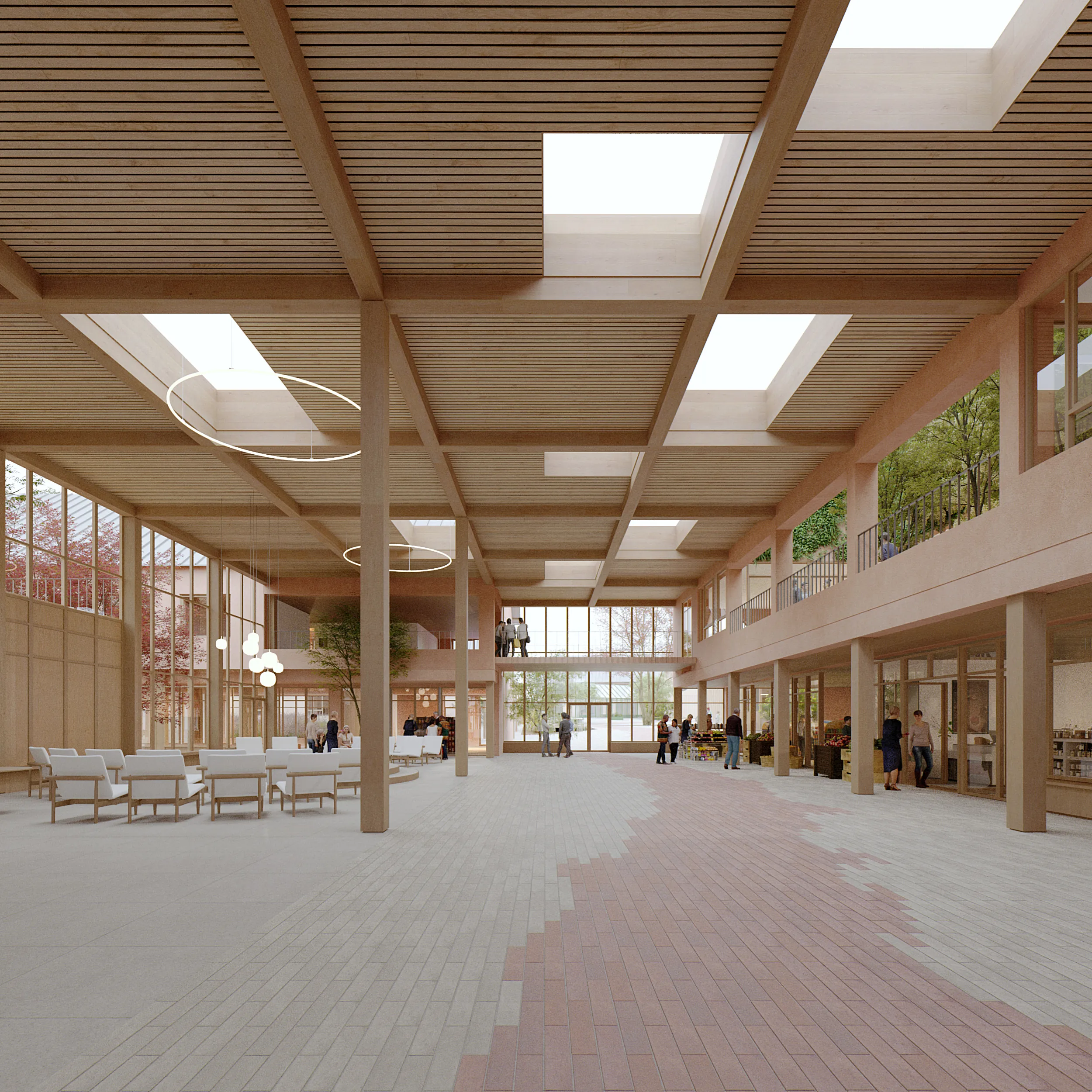Willow Valley Communities is continuing to grow with a new memory care community, and the organization’s leaders are taking inspiration for the project from a famous memory care model in The Netherlands.
Even in recent years amid pandemic challenges, Willow Valley and its development company, Willow Valley Development Corp., continued planning on multiple projects to push the company forward, according to COO and President Craig Thompson.
Among those projects is the Marlin and Doris Thomas Memory Center, located on the organization’s Lakes campus. The new memory care center will see construction in multiple phases, with phase one adding 82 units by late 2025 and the second phase will add an additional 60 units, according to Willow Valley Communities Charitable Foundation Executive Director Lauren Renehan.
The project takes inspiration from the Hogeweyk, a memory care community in the Netherlands that is known across the globe for its non-institutional approach to caring for people living with dementia. Willow Valley recently raised over $22 million for its construction.
Outside of that, the organization is planning a 20-story, 146-unit independent living community known as the “Mosaic” in downtown Lancaster, Pennsylvania, that is currently in pre-selling. Residents in the community will have access to the Willow Valley care continuum, just as if they were living on the organization’s main campus.
Now in its 40th year as an organization, Willow Valley is looking ahead to the future with more expansion planned.
“We knew as an organization that we were going to continue to grow,” Thompson told Memory Care Business. “That’s what we do, and growth is in our DNA and we will continue to move forward for years to come.”
Memory care project takes cues from Hogeweyk
For years, the Hogeweyk has been seen as a standard bearer for non-institutional memory care. The community, located in Weesp, opened in 2009 and has received media coverage and industry accolades for its memory care model in which residents live in a “dementia village” made to look and feel like a small community with shops, cafes and other spaces of everyday life.
Unlike in some communities in the U.S., residents living in the Hogeweyk are not confined by locked doors. Instead, they are monitored and guided by staff throughout their day. Willow Valley took cues from the Hogeweyk community by partnering with Denmark-based Nord Architects, a company behind multiple memory care villages and care homes in Europe.
The project team also researched over two dozen communities in the U.S. and abroad, and consulted with dementia care experts in the U.S., Australia and Israel.
“Innovation,being at the leading edge and doing something right drove us to come up with the best of the best when it comes to memory care,” Thompson said.
Nord Architects incorporated elements into design that help residents move through the spaces, including alternating colors of spaces to help areas stand out to residents. The community is also planning to set a staffing ratio of 5 staff for every 1 resident.
“We’re locking into something that is state-of-the-art, and we’re excited to be able to partner with some other experts in the field to deliver a product that will do good for a lot of different people and families out there in the years ahead,” Thompson added.
The building is planned to be made from timber, plaster from clay and the project’s design elements are meant to conjure a sense of home, according to the Nord Architects website.
Residents will be grouped into 14 households containing 10 residents each, surrounded by a secure perimeter across seven acres of land. Accompanying the homes will be a brain tech and assessment center, a “brain cafe” and a caregiver resource and support center, Renehan said. A public-facing adult day center will also be part of the project.
“We’re really modeling this memory care center specifically to be a stepping stone platform for those who are new to the journey of dementia,” Renehan told MCB.
Memory care will continue to be a big part of what Willow Valley does in the future, according to Thompson.
“We’re looking at what might be possible in terms of technology and supporting staff, from dining to care, that will help determine what senior living looks like over the coming years,” Thompson said. “We need to provide variety, diversity and everything a potential resident wants in looking for a senior living facility.”


